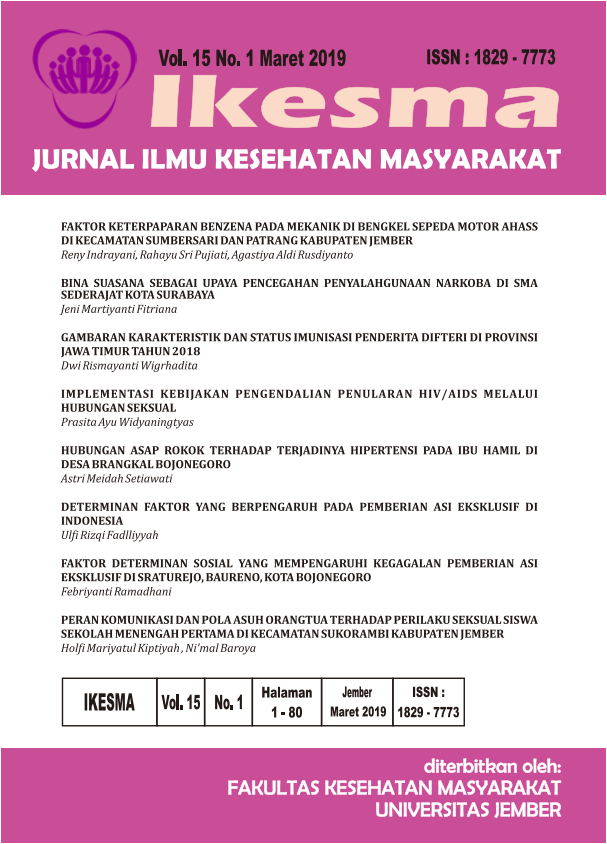FAKTOR KETERPAPARAN BENZENA PADA MEKANIK DI BENGKEL SEPEDA MOTOR
STUDI PADA BENGKEL AHASS DI KECAMATAN SUMBERSARI DAN PATRANG KABUPATEN JEMBER
DOI:
https://doi.org/10.19184/ikesma.v15i1.14417Abstract
The effects of benzene exposure on living things, especially animals and humans, have been studied almost throughout this century. Short exposure and long-term exposure to benzene can cause health problems until cancer occurs. One type of work that is at risk for indoor benzene exposure is the mechanic of a motorbike repair shop. This study aims to examine benzene exposure factors (source of exposure, air concentration, exposure, duration of exposure, and frequency of exposure) in AHASS mechanics in Sumbersari and Patrang Subdistricts, Jember Regency, and compare these exposure factors with threshold values (NAB) that applies. This research is a quantitative preliminary research, carried out from April to October 2017 in 5 AHASS motorcycle workshops spread in Sumbersari and Patrang Districts, Jember Regency. The sample of this study amounted to 30 people. Based on the results of the study it was found that benzene in the air 5 AHASS workshops spread in Sumbersari and Patrang Subdistricts, the main source came from the evaporation of fuel placed in open containers and through the combustion of the customer's motorcycle engine. The greatest concentration of benzene is in Workshop V which is equal to 21.887 mg / m3. Benzene can enter the mechanical body through inhalation and absorb it through the skin. The longest exposure time occurred in mechanics in Workshop W, while the longest duration of exposure was experienced by mechanics / 28th respondents. The frequency of benzene exposure is most often experienced by mechanics working at Y Workshop, which is 341 days a year. Benzene concentrations in air Workshop V, W, X, and Z exceed NAB, while benzene concentrations in air Y Workshop do not exceed or below NAB. To avoid the risk of benzene exposure to mechanics, the manager of Workshop V, W, X and Z is expected to make efforts to minimize benzene exposure through efforts to reduce benzene concentration in the air as well as efforts to reduce time, duration and frequency of exposure. In addition, further research is needed to determine the risk of benzene exposure to mechanics in AHASS Workshop and to determine the amount of reduction in concentration, time, duration, and frequency of exposure to minimize mechanical health risks due to exposure to benzene in the workplace.



